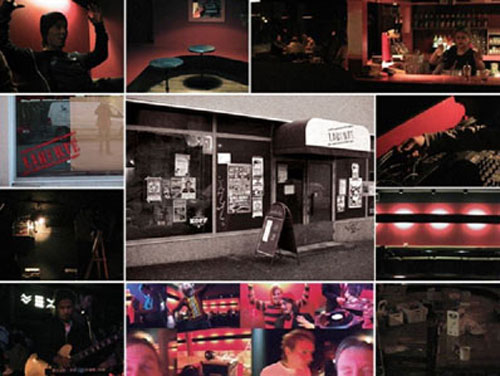LIBERTE

Creating a club for young people
Key Innovation
A group of people creating a club together in co-operation with its forthcoming users.
Problematic background and context
Kallio is an old city district of Helsinki that has usually had places with cheap beer and a lot of unemployed middle-aged people. It is an old labor area that lacks a lot of business services and is still considered a somewhat dangerous area with substance abusers and criminal activity. Since the nineties the amount of students has gone up, and the amount of young people living there is currently large. Thus the social situation has already changed, even though the services have not been updated. The cultural activities that places have to offer have stayed minimal. The bars are still targeted mostly to the old customer base, and young people have adapted to the situation. The need for a change exists. This need has resulted in a situation where the local people feel motivated enough to take action.
Solution description
The solution targets a specific local need of cultural activities. The Kallio district in Helsinki has been lacking proper cultural activity for some time. The aim of this solution is to enrich local culture and to give local artists a place to create happenings and new connections. The solution came to life when a group of young people decided to take action and started to work for a mutual target. By connecting the right people together, the solution came possible. The innovation is interesting because a group of non-professionals are working together to create a professional outcome. This solution emphasizes the term “street democracy” in a new way and affects the local environment. The solution promotes grassroots culture The club offers activities seven days per week, and its societal and personal value is already high for many.
Timeframe
The solution started in November 2004.
Development phase
Diffusion:
The solution is not the only one in Finland, but it is a phenomenon that is growing. There are many urban districts, which lack proper cultural services. This solution comes from down to up, and is based on the actual local needs. This phenomenon is already expanding in the culture capitals of Europe and the USA.
Maturity:
The solution has just started but is already working at its fullest capability. There are ideas to expand the solution further, but the process has not yet started. First the group makes sure they can run the club affordably.
Revenue/costs model
Tosko Catering pays their employees. -Customers pay for the sales items at the club to Tosko Catering that runs the club. -The financial surplus is invested in the expansion of the activities offered. – The entrance fee depends on the occasion and goes to the organizer of the evening. It is usually low or even free.
Social evaluation
The cultural scene offers young people a place to be involved in the society. When a place is built and run more by young people themselves the process stays more democratic. When this is also done in a city district that lacks the proper cultural arenas for small band and club activity, and the profit is planned to be invested in future exhibitions, happenings and possible work spaces. With the new club the musicians get a nice place to perform in and can easily create new fruitful connections.
Environmental evaluation
When the work is done as a group, it gives the people, who alone could not accomplish something this big, a chance to create a sophisticated result at a lower budget. In looking for the lower cost the personnel have to figure out the easiest logistics on a local level. This means using recycled material as much as possible, as well as using it in the most effective way.
Economical evaluation
The club gives job possibilities for various people. It creates a more democratic work environment also for those who handle only the catering services through Tosko Catering. It activates a lot of marginal musicians, and affects at the same time the other cultural layers. This expands the field of creative activity, which can evolve to widen the cultural atmosphere, and which could probably lead to more environment-friendly consuming habits.
Authors
Tatu Marttila / University of Arts and Design – Helsinki / Finland